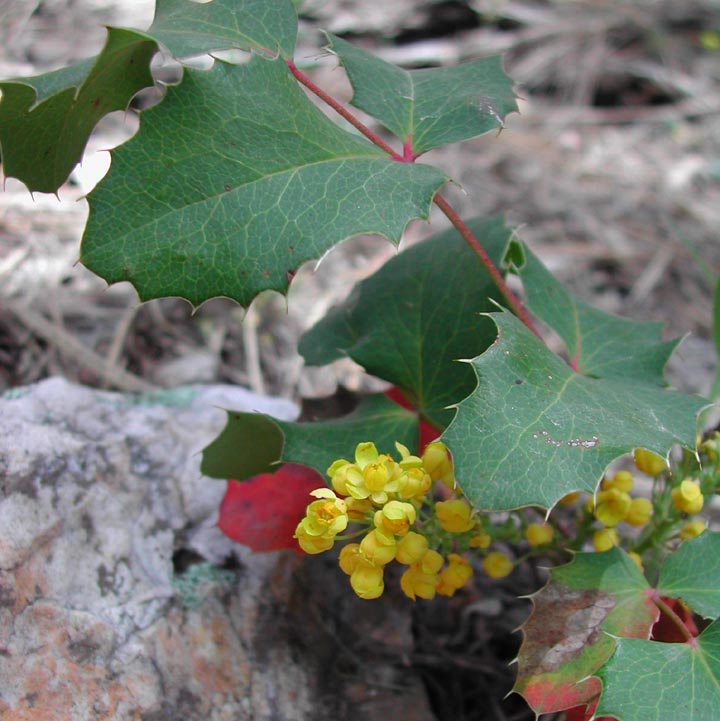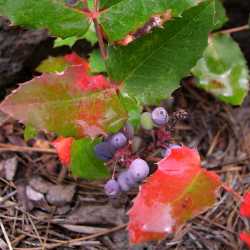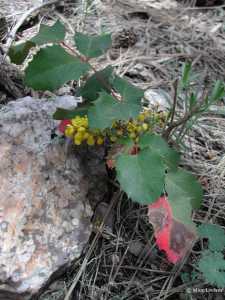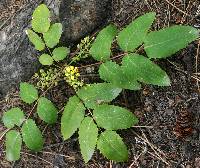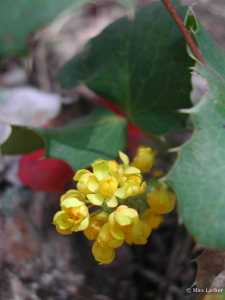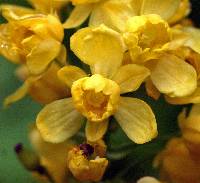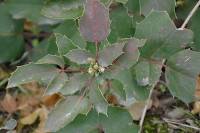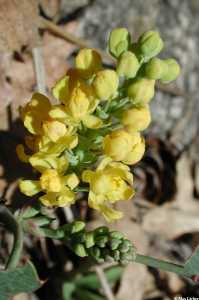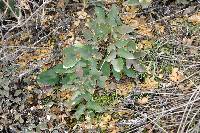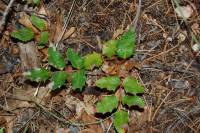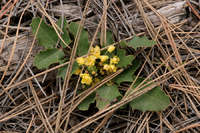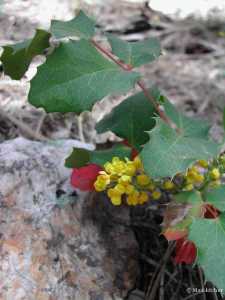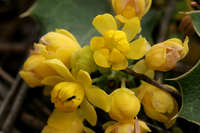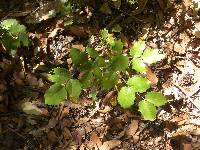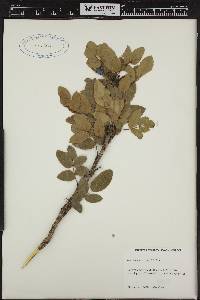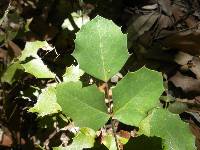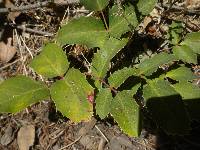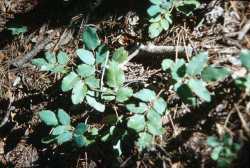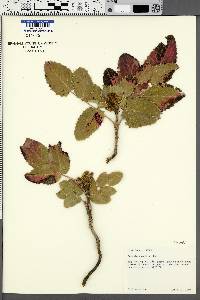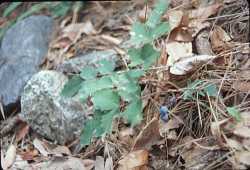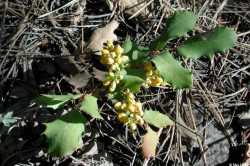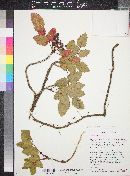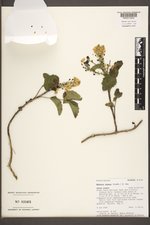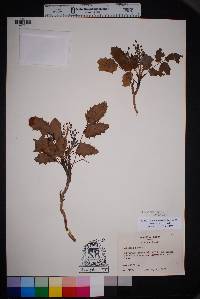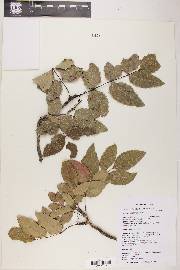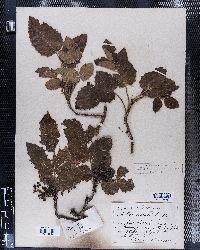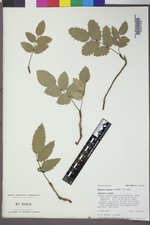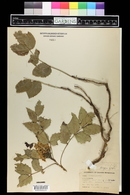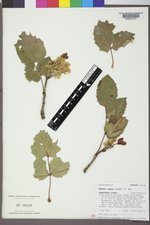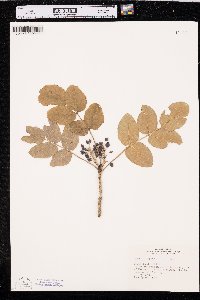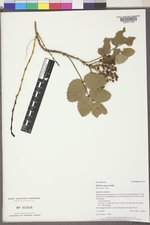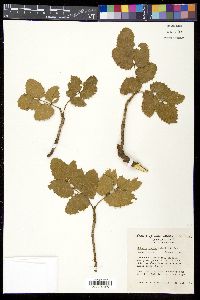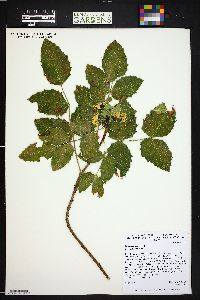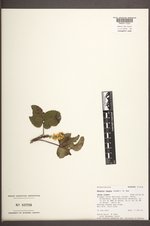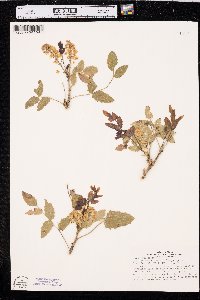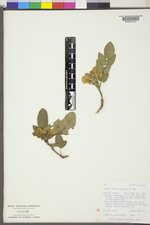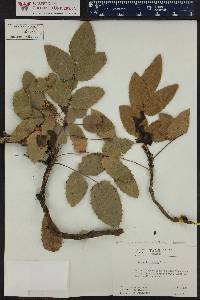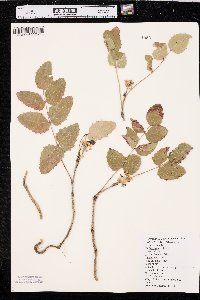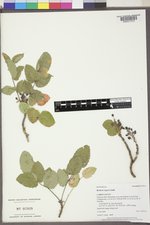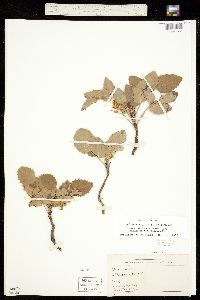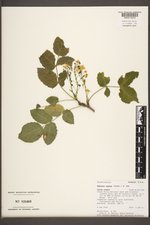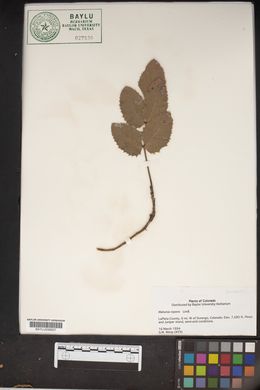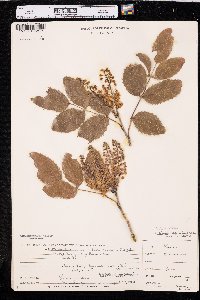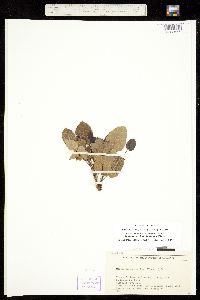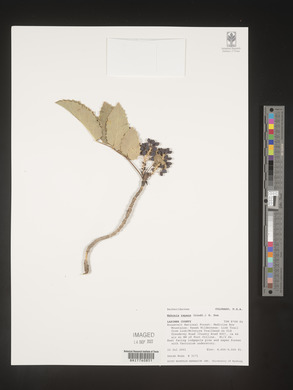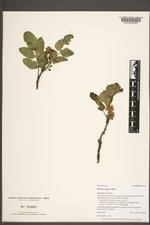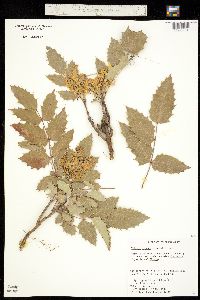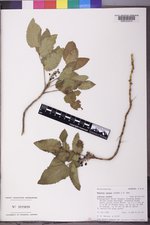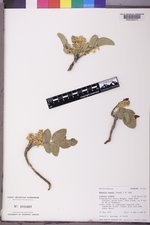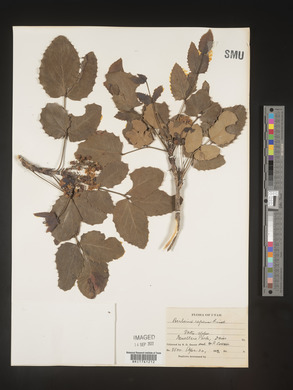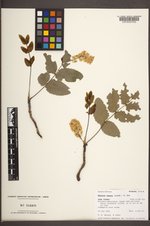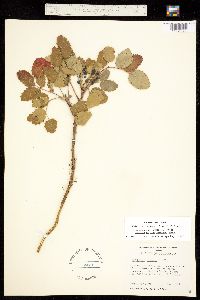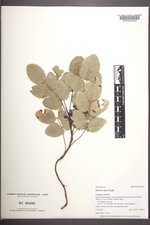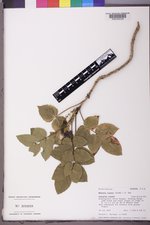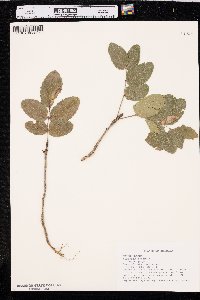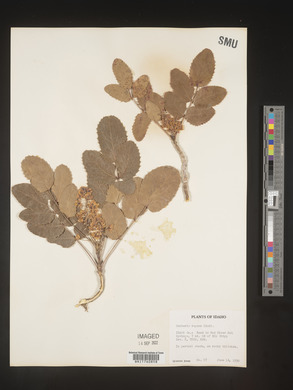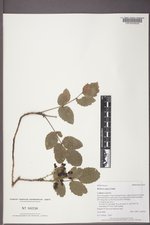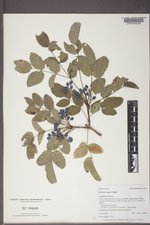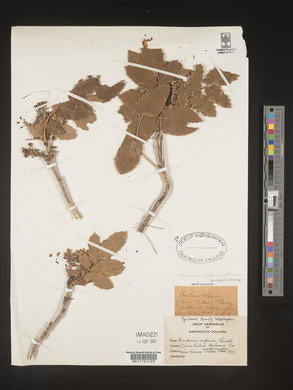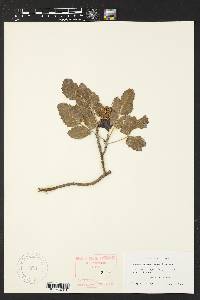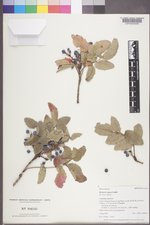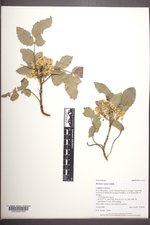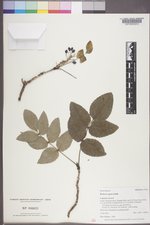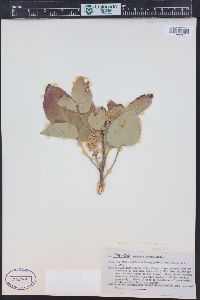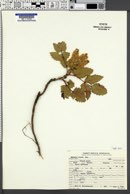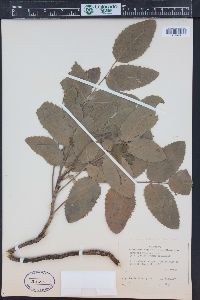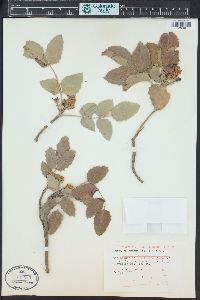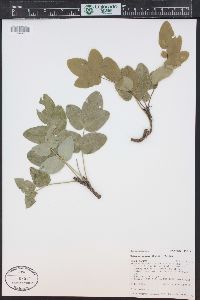
|
|
|
|
Family: Berberidaceae
Creeping Oregon-Grape, more...Creeping Oregon-Grape, creeping barberry, creeping mahonia, Truckee barberry (es: yerba de la sangre)
[Berberis aquifolium var. repens (Lindl.) Scoggan, moreBerberis repens Lindl., Berberis sonnei (Abrams) McMinn, Mahonia amplectens Eastw., Mahonia pumila (Greene) Fedde, Mahonia repens f. subcordata Rehder, Mahonia repens var. scopulatilis S. L. Welsh, Mahonia sonnei Abrams, Odostemon pumilus (Greene) Heller, Odostemon repens (Lindl.) Cockerell] |
Shrubs , evergreen, 0.02-0.2(-0.6) m. Stems monomorphic, usually without short axillary shoots. Bark of 2d-year stems grayish or purplish brown, glabrous. Bud scales 3-8 mm, deciduous. Spines absent. Leaves (3-)5-7-foliolate; petioles (1-)3-9 cm. Leaflet blades thin and flexible; surfaces abaxially dull, papillose, adaxially dull, rarely glossy, somewhat glaucous; terminal leaflet stalked, blade 3.2-9.5 × 2.3-6 cm, 1.2-2.2(-2.5) times as long as wide; lateral leaflets ovate or elliptic, 1(-3)-veined from base, base rounded to obtuse or truncate, margins plane, toothed, with 6-24 teeth 0.5-3 mm tipped with spines to 0.6-2.8 × 0.1-0.25 mm, apex rounded, rarely obtuse or even broadly acute. Inflorescences racemose, dense, 25-50-flowered, 3-10 cm; bracteoles membranous, apex rounded to obtuse or broadly acute. Anther filaments with distal pair of recurved lateral teeth. Berries blue, glaucous, oblong-ovoid, 6-10 mm, juicy, solid. 2 n = 28. Flowering spring (Apr-Jun). Open forest, shrubland, and grassland; 200-3000 m; Alta., B.C.; Ariz., Calif., Colo., Idaho, Minn., Mont., Nebr., Nev., N.Mex., N.Dak., Oreg., S.Dak., Tex., Utah, Wash., Wyo. Berberis sonnei was described based on plants with relatively narrow, rather shiny leaflets collected by Sonne in Truckee, California. Subsequent collections from this population show the morphology typical of B. repens; Sonne's collections evidently are an aberrant form of this species. Berberis repens is resistant to infection by Puccinia graminis. Various Native American tribes used preparations of the roots of Berberis repens to treat stomach troubles, to prevent bloody dysentary, and as a blood purifier; mixed with whiskey, it was used for bladder problems, venereal diseases, general aches, and kidney problems; and preparations made from the entire plant served as a cure-all and as a lotion for scorpion bites (D. E. Moermann 1986).
Plant: Shrubs, stoloniferous, with vertical stems to 15 cm tall Leaves: odd-pinnate, 15-30 cm long, dull above, papillose and paler green below; leaflets (3-)5-7, ovate, subequal, 20-75 mm long; bases rounded or subcordate, often asymmetrical; apices rounded or obtuse, rarely subacute; veins prominent; teeth of leaflet margin 6-10 pairs INFLORESCENCE: racemose, 5-8 cm long, (10-)15-30-flowered; racemes 3-7 per leaf axil; pseudopedicels 5-8(-11) mm long; bracts 1.5 mm long; bracteoles absent Flowers: outer sepals ovate, 2 mm long; median sepals oblong, 3-5 mm long; inner sepals obovate, 6-8 mm long; petals oblong-obovate, 5-7 mm long, the apices deeply incised with two acute lobes; filaments bearing 2 lateral teeth at apex Fruit: FRUITS berries, globose, pruinose, blue, 8-9 mm long, 6-9 mm wide; SEEDS reniform, shiny, reddish-brown, 5-7 mm long Misc: Coniferous forests; 1500-2600 m (5000-8500 ft); Apr-Jun REFERENCES: Laferrière, Joseph E. 2001. Berberidaceae. J. Ariz. - Nev. Acad. Sci. Volume 26(1). Shrub 2 - 20 cm tall, rarely to 0.6 m Leaves: alternate, pinnately compound, stalked, evergreen, with three to seven leaflets. Flowers: borne 25 to 50 in a dense inflorescence 3 - 10 cm long, subtended by mambrane-like bracts with rounded to blunt or pointed tips. The six yellow petal-like sepals fall soon after flowering, each of the six yellow petals has two basal glands, and each filament has a pair of curved lateral teeth. Fruit: a blue to black berry, 6 - 10 mm long, oblong to egg-shaped, juicy, covered with a whitish waxy coating (glaucous). Twigs: grayish to purplish brown in second year, usually lacking short lateral branchlets. Leaflets: stalkless except for terminal leaflet, dull bluish green, becoming purple in winter, 3.2 - 9.5 cm long, 2.3 - 6 cm wide, egg-shaped to elliptic with a rounded tip and rounded to squared base, six to 24 spine-tipped teeth per side, leathery with a warty lower surface. Similar species: Berberis canadensis, B. thunbergii, and B. vulgaris have short lateral branchlets, spines, simple leaves, and red berries. Berberis aquifolium is upright with shiny, pinnately compound leaves. Flowering: April Habitat and ecology: Native to the western United States, this species was found growing in a jack pine area in Porter County, Indiana. Occurence in the Chicago region: non-native Etymology: Berberis is a Latinized form of the Arabian name for barberry. Repens means creeping. Author: The Morton Arboretum Springer et al. 2011, FNA 1997, Heil et al 2013 Common Name: creeping barberry Duration: Perennial Nativity: Native Lifeform: Subshrub General: Small evergreen shrub, to 20 cm tall; stems creeping to ascending, grayish to purplish brown. Leaves: Alternate and petiolate, the petioles 3-9 cm; leaves evergreen, pinnately compound with 3-7 leaflets; leaflets thin, flexible, somewhat glaucous (blue-green waxy) on upper surface, the margins strongly wavy, with 6-24 spine-tipped teeth; terminal leaflet to 10 cm long, 1-2 times as long as wide. Flowers: Yellow, in dense racemes 3-10 cm long, with 25-50 flowers; sepals 6, yellow; petals 6, yellow. Fruits: Berries ovoid to ellipsoid, 6-10 mm long, blue, glaucous, juicy, solid. Ecology: Found in shady areas in ponderosa pine and spruce-fir forests, from 5,000-8,500 ft (1524-2591 m), flowers April-June. Distribution: w N. Amer., from British Columbia, WA, ID, MT, ND, south to NV, AZ and NM. Notes: This distinctive low-growing woody plant with holly-like leaves is common in the understory of Ponderosa Pine forests in northern Arizona and New Mexico. It looks like nothing else you-ll see in that habitat. It is an important forage species for wildlife, with birds and mammals eating the berries when available, and wild ungulates browsing the foliage in fall and winter. Ethnobotany: Utilized by numerous tribes in the Intermountain West for medicine. Berries are eaten raw or made into jelly, jam, and beverages, or mashed with sugar for dessert. The root is a strong liver tonic and is also used to make a yellow dye. The Navajo use it to treat scorpion bites. Tea made from roots is used as a laxative. It provides an excellent ground cover, and is useful in the prevention of erosion after fire, or in the rehabilitation of mines, roadsides, and other disturbed areas. Often used for landscaping when evergreen foliage is desired. Etymology: Berberis is the Latinized form of the Arabic name for the fruit; repens means creeping. Synonyms: None Editor: AHazelton 2015 |
|
|
|

